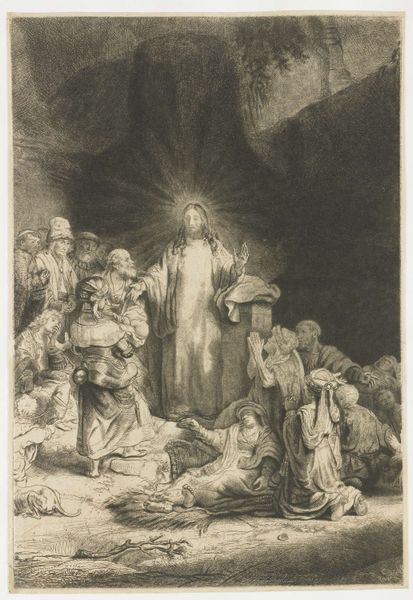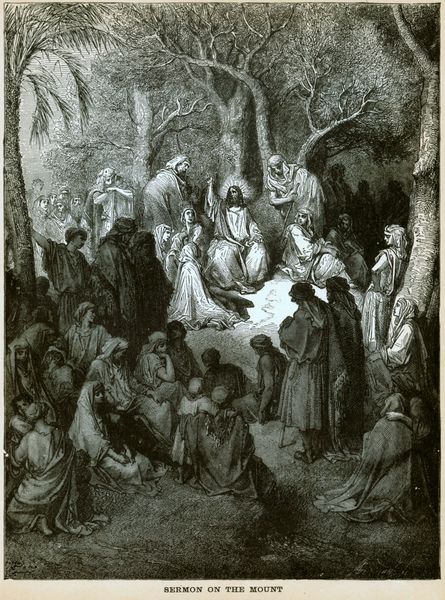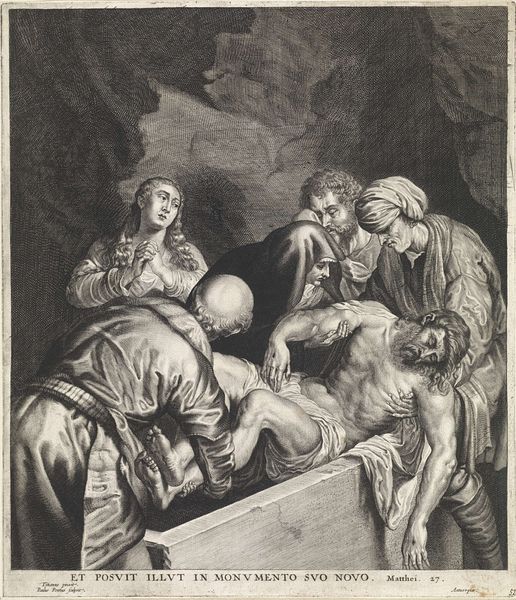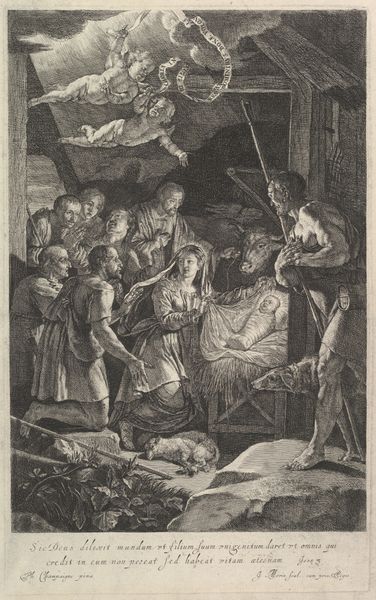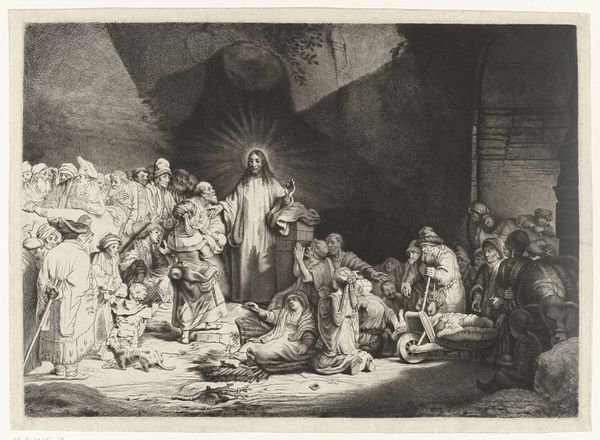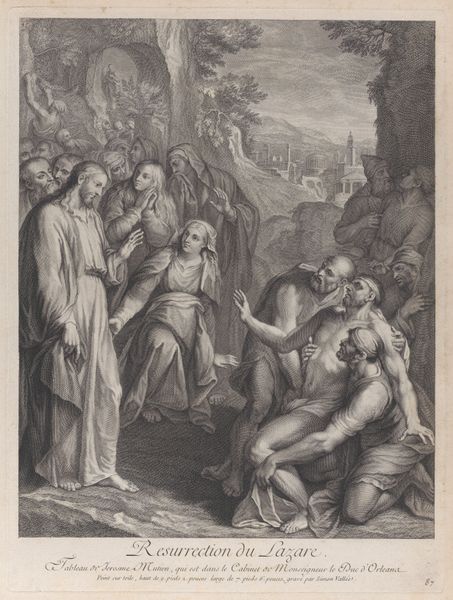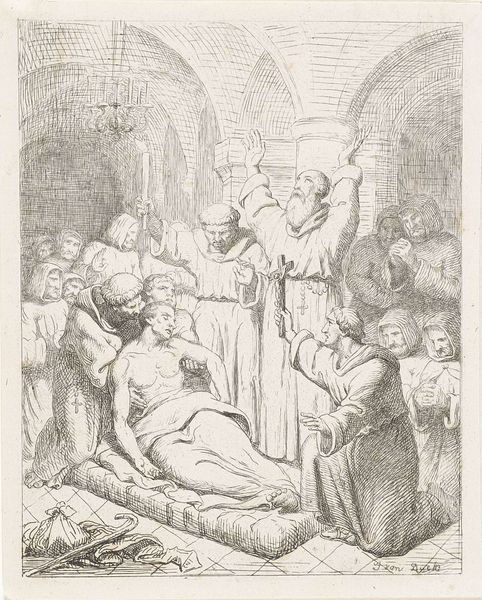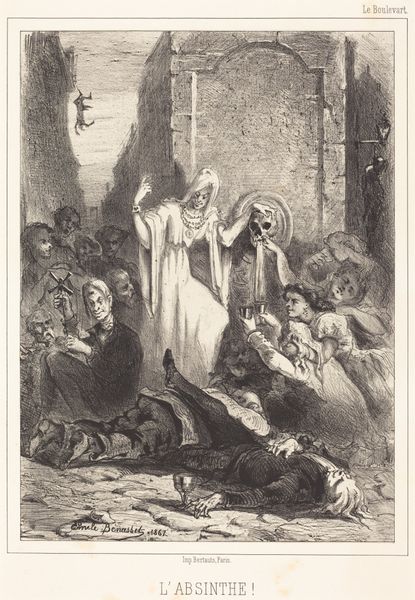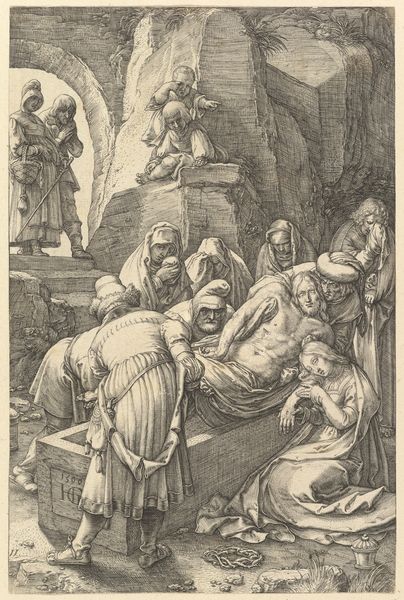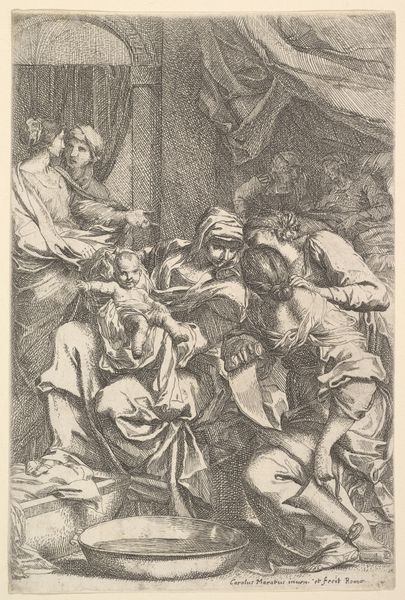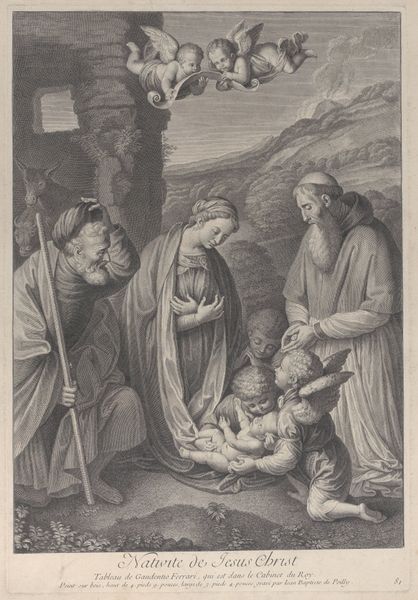
print, intaglio, engraving
#
baroque
# print
#
intaglio
#
landscape
#
figuration
#
history-painting
#
engraving
Dimensions: height 203 mm, width 143 mm
Copyright: Rijks Museum: Open Domain
Curator: Right, let’s focus on this moving scene. This engraving, “The Entombment of Christ,” was created around 1618 by Nicolaes de Bruyn. It’s part of the Rijksmuseum’s collection. Editor: Gosh, it hits you right in the gut, doesn't it? That pale, limp body. It's so stark. And everyone around, draped in grief. I feel almost like I'm intruding on something sacred and profoundly sad. Curator: The scene is set with meticulous detail typical of the baroque style, even though Bruyn was working slightly outside its peak. We see Christ being lowered into his tomb, surrounded by mourners, and a landscape extending behind them, up the hillside. It invites contemplation, but consider the role of prints like this; they democratized religious imagery. Editor: Yes, the landscape almost seems to swallow them up—nature indifferent to their sorrow. It makes you think about how faith sustains in the face of cosmic silence. Although indifferent, it really lends itself to the emotional aspect. What does it mean when grief is at the forefront? I bet in its time, this piece felt both personal and political! Curator: Exactly. Prints made the imagery more accessible, influencing public devotion and religious thought beyond the church. And it does point to history painting, to narration in general, and beyond religion. Note also that in the original time, engraving was considered a meticulous practice, one of skilled artisans rather than artistic visionaries. It certainly influenced popular culture through its availability and aesthetic style. Editor: True! The etching feels so meticulous, every tiny line adding to the drama. Thinking of its popularity then – these stark images made profound statements beyond aesthetics alone, shaping perspectives and, in effect, faith itself. It definitely speaks of the power of imagery, its reach in people's lives, doesn't it? I do love that it gives me such emotional reactions, no matter its historical background. Curator: Indeed, it illustrates the powerful connection between art, religion, and public life in the early 17th century. The work is so impressive because it achieves these large goals and scale at such a low format, allowing the people to access such intense imagery. Editor: Thanks, I’ll remember it's more than simply an emotional landscape but a powerful tool of thought and belief.
Comments
No comments
Be the first to comment and join the conversation on the ultimate creative platform.
